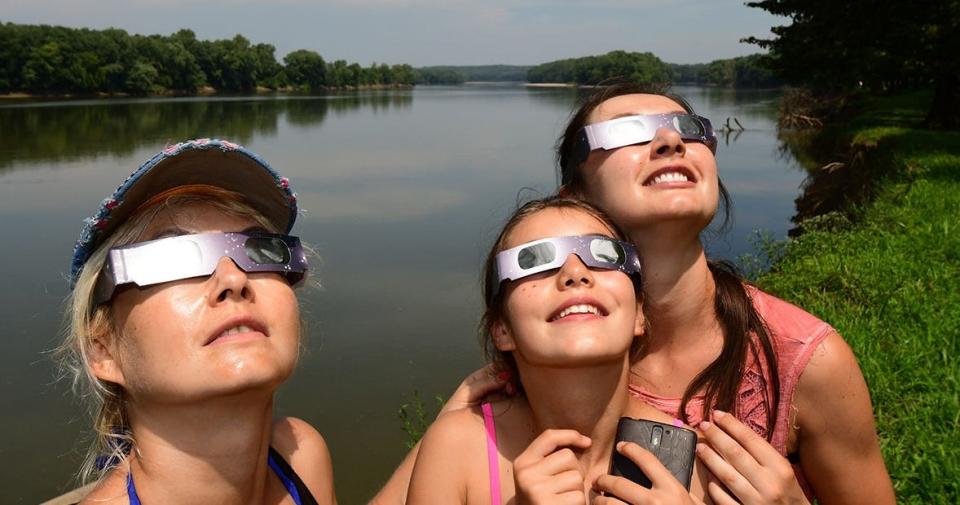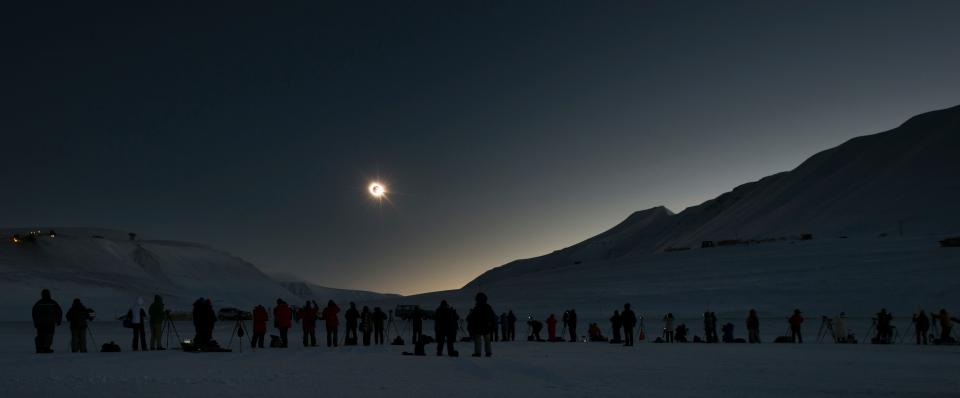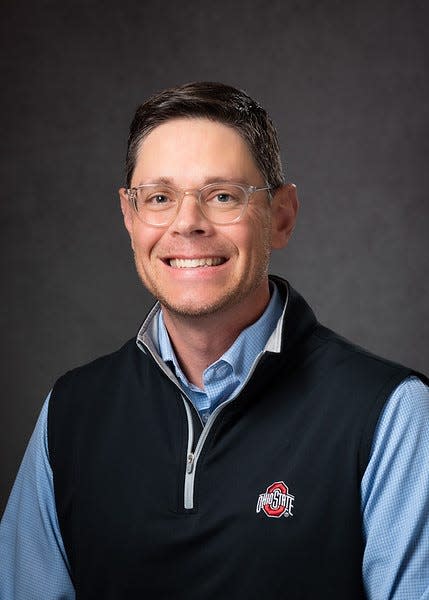Spectacular and dangerous. How to safely enjoy solar eclipse today.
Dr. Aaron Zimmerman is a clinical professor at Ohio State University College of Optometry.
If all goes as planned, a spectacular and potentially dangerous event will be seen in Ohio April 8. All should make an attempt to experience, enjoy and safely view the total solar eclipse.
Proper eye protection will be key.
Why will the eclipse be so dangerous?

The sun is incredibly bright and directly looking at it for anything longer than a few seconds can result in damage to the back of the eye. The ultraviolet and short visible wavelengths can overwhelm the cells in the retina (back of the eye) and if those cells are exposed to super-intense light for too long of a time (anything longer than a few seconds) then those cells can be permanently damaged.
If those cells are permanently damaged then an individual will lose some extent of their central vision.
Due to the hours long duration of an eclipse, individuals may innocently glance at the eclipse for a few seconds at a time, but then repeatedly make glances this over the course of the event.
These glances add up and by the end of the eclipse someone may have viewed the eclipse for a minute or two and put their eyes at significant risk.
Solar eclipse 2024: How to watch the April 8 event and protect your eyes, kids and nerves
Why is the eclipse so special?
It will be the first total solar eclipse observable within Ohio in 218 years.
The entire eclipse will occur over 2.5 hours and begins as the moon approaches and then centers over the sun.
Totality occurs when the moon is perfectly aligned with the sun, a period of approximately 3 minutes, and it is safe to view the eclipse without any eye protection. The moon will then begin to move away from the sun.
Other than the period of totality, all other stages of the eclipse are considered partial eclipses and are very dangerous to view without protection.
How can I protect myself from the eclipse?
The good news is that with some simple precautions, such as wearing eclipse glasses labeled with the International Organization for Standardization (ISO) 12312-2 which states that the device complies with the eclipse viewing standard.
With these glasses you can safely and comfortably look at the full sun or partial eclipses for as long as you would like. It turns out that they are too dark during totality which is why they can be removed – as you will not see anything.

Unfortunately, opportunists can manufacture products that claim to meet the eclipse standard but actually do not. Here are a few ways to best assure you are purchasing and have appropriate eclipse glasses:
Review the reputable vendor list on the American Astronomical Society website (vendors eclipse.aas.org/eye-safety/viewers-filters).
Once you purchase a pair, inspect them for any scratches, holes, or tears in the lenses – if present then do not use.
If intact then place them on and look at a bright light bulb in your home or your cell phone flashlight – you should barely be able to see it.
If that seems to be the case then use them to view the sun – you should be able to comfortably view the sun for an extended period of time. If you have your eclipse glasses from 2017 and they are not damaged, then they will still work.
Other safe viewing options include welding filters with shade numbers 12 to 14 or indirect viewing options. Never use binoculars or a telescope without proper filters as these can condense the light delivered to the eye and which can result in rapid eye damage.

What should I do if I think I have been injured by the April 8 solar eclipse?
If you think that you have suffered damage to your eyes following the eclipse then please consult with your eye care professional. There is no known cure for eclipse induced damage to the back of the eye, but there are known and easy ways to prevent this from happening.
I encourage everyone to take the opportunity to view this awe-inspiring event. It is very safe to view with the proper precautions. We want to preserve our eyes and the eyes of our children so that they maintain great vision for Ohio’s next total eclipse in 2099.
Dr. Aaron Zimmerman is a clinical professor at Ohio State University College of Optometry. Related to this topic, he is a cover editor of "The Ophthalmic Laser Handbook" and serves on the Commission on Ophthalmic Standards of the American Optometric Association which represents it on the Accredited Standards Committee Z80. He has represented the AOA on the American National Standards Institute (ANSI) Z87.1 committee.
This article originally appeared on The Columbus Dispatch: Solar eclipse 2024 comes with danger. Here's why.
